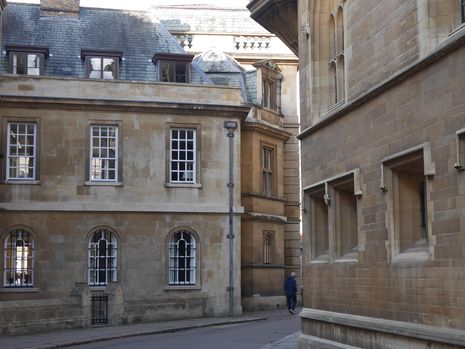Not all state schools are made equal
Outreach will fall short until comprehensive schools are set apart from grammars in admissions, argues Ffion Edwards

In outreach talks given by Cambridge at my sixth form, the statistic of 72% was mentioned time and time again. Supposedly, this represents the proportion of state-school students admitted annually by the University. During these talks, it was used to reassure us that, were we to attend, we wouldn’t feel isolated by our academic backgrounds. Perhaps naively, I associated this figure with schools like mine.
“Perhaps naively, I associated this figure with schools like mine”
My sixth form and secondary school were both comprehensive, with only 38% of my GCSE cohort achieving a 5 or higher in Maths and English. It wasn’t until arriving in Cambridge that I realised how many people who, despite technically going to state schools too, had a very different academic experience to me. Among those I met, it seemed that the majority of those who had not attended private schools had gone to grammar schools. The more people I met who had attended a grammar school the more I started to question why they were lumped under the same “state school” umbrella as comprehensives, when they differ so drastically.
In 2022, there were 2,806 home acceptances into Cambridge. 26.3% of these came from comprehensive schools, and 18.1% from grammar schools. Despite the higher comprehensive school admissions, these numbers make me uneasy. Although you wouldn’t think it at Cambridge, only 5% of secondary school pupils in Britain attend a grammar school. The academic background of Cambridge students is skewed disproportionately towards grammar schools.
Although both are categorised as “state schools”, creating a distinction between them is crucial. Ultimately, Cambridge cannot claim to prioritise outreach while ignoring the fact that grammar schools contribute to class divisions amongst school children. Comprehensive Future argues that pupils who come from a disadvantaged background are considerably less likely to achieve high enough in the 11-plus to be selected by a grammar. By only allowing access to certain children, who happen to often be the more privileged ones, grammar schools, which regularly produce the highest grades in a region, exclude poorer children from achieving the same as other students academically.
“Cambridge’s student demography skews towards grammars”
If it seems far fetched to imply that grammar schools reinforce the UK’s economic disparities, we only need to look at their student demographics to see how this is in fact the case. The average percentage of pupils on Free School Meals in comprehensive schools is 28.4%, in comparison to only 6.7% in grammar schools. The root of this exclusion lies in the 11-plus exam. The most economically deprived pupils will already be far behind their more affluent peers by this point in their academic life, and ultimately only 6% of these students will go on to achieve within the top 20% of GCSE grades.
Therefore, it is evident that conditions within comprehensive and grammar schools will often differ dramatically. This creates unique challenges for many comprehensive students to overcome, whether it be their own economic struggles, or just a less academically focussed environment to learn in. Perhaps limiting the chances of a comprehensive school student being able to, or encouraged enough by the teachers around them to, apply to somewhere as academically rigorous as Cambridge, especially with its reputation for poshness.
It’s also important to mention that grammar schools fortify the north/south divide present in England, especially in terms of how many northerners apply and get into Oxbridge. According to the NECPC, child poverty levels of 25% or higher are more common in certain northern areas, creating the barriers I previously discussed for these children to access grammar school. Not to mention, the number of grammar schools in the north that these children even could have access to are significantly lower. There are none in the North East and only 19 in the North West, which is the same amount as in London alone. Considering these disparities, I would say it’s safe to assume that this has at least some significance to the fact that, according to The Tab, in 2023 0.7% of northern students made it to Oxbridge, compared to 1.3% of southern students.
By grouping comprehensive and grammar school admissions together, Cambridge is failing to take into account the very apparent differences between them. There is consequently a misrepresentation of the reality of their outreach efforts, with only around 26% of all admissions coming from the comprehensive schools whose pupils make up the vast majority of secondary students in the UK.
 News / Uni registers controversial new women’s society28 November 2025
News / Uni registers controversial new women’s society28 November 2025 News / Cambridge cosies up to Reform UK30 November 2025
News / Cambridge cosies up to Reform UK30 November 2025 News / 15 arrested in pro-Palestine protest 29 November 2025
News / 15 arrested in pro-Palestine protest 29 November 2025 Comment / Cambridge is woke – that’s no bad thing 28 November 2025
Comment / Cambridge is woke – that’s no bad thing 28 November 2025 Comment / Surely it’s time to scrap scholars’ dinners?28 November 2025
Comment / Surely it’s time to scrap scholars’ dinners?28 November 2025









